Hi, Daddy Mojo here and in the immortal words of Billy Mays, but wait, there’s more, there is more to Sunday. The wordplay in the text is very clever and parlays the meanings behind some of the imagery. When Martin and Maize return, the eight pages where the three of them sit on the sofa could have been a snoozefest that made readers of all ages check out the book. Instead, it sucks readers in further simply by focusing in on the details. It’s just a black hole, but I keep getting closer and closer until I can only see the closing void of space.
Kids aged three through seven will absolutely love Sunday. It’s an illustrated book by Brazilian author and illustrator Marcelo Tolentino and immediately makes an impression. Its vertical is different from other books those young ages encounter; it’s curious. The text is very sparse; there aren’t many words at all. The illustrations are grand, simultaneously detailed, and trippy, showing a boy and his dog engaging in all manner of wondrous things that kids daydream about.
In short, Sunday is one of those illustrated books that anyone, anywhere can understand, relate to, and enjoy. It’s great at story time and as open to questions and answers with the children as it is to simply sit still, look at the pictures and relax. Those slightly older, clever kids who think they’re too cool for story time or books can be challenged to find the inspiration for the dream elements.
Martin is intent on doing something different this Sunday. He goes to his grandfather but he’s watching television. His dad is helping mom cook and his grandmother is doing laundry. It’s up to him and his dog, Maize to entertain themselves and it’s a big world out there. They cross the open fields, face frozen tundra, encounter streams of lava, battle a dragon and more before returning home. After he cleans up, the two best friends sit on the sofa and tell his grandmother about their adventure.
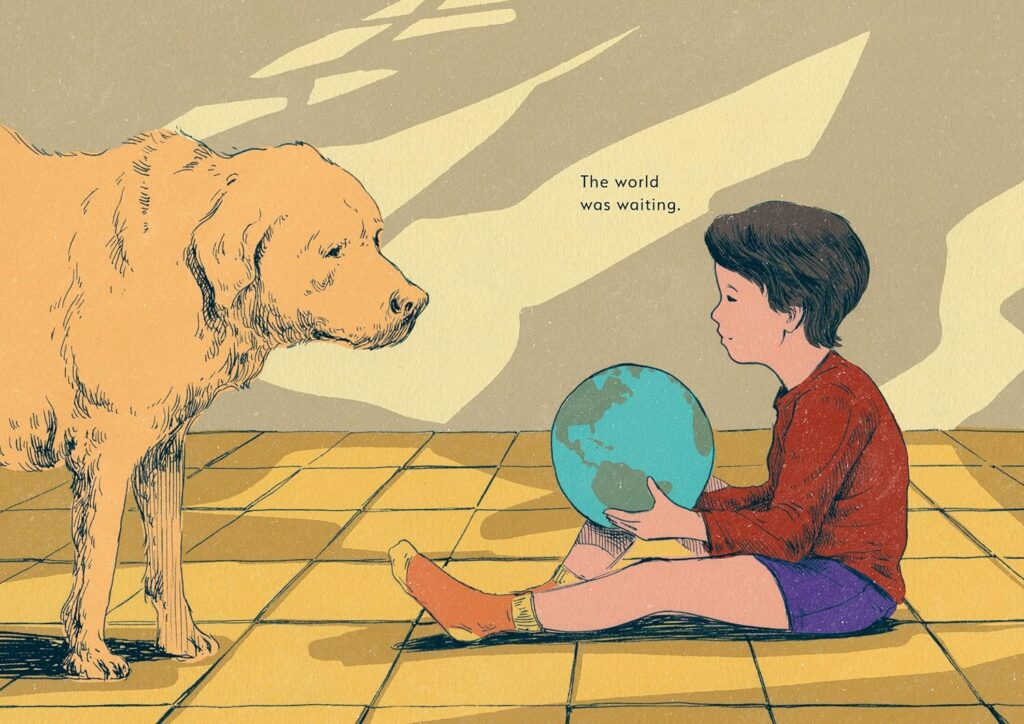
As a whole, the story is very simple, isn’t it? It’s not one that’s hasn’t been told before and presented through a different lens Sunday would be very forgettable. Instead, it hits that sweet spot where the combination of pitch-perfect, and appropriate, art, meets text that’s just descriptive, and short enough, to capture that illusive imagination of young elementary ages.
Those ages don’t always need to have the joke explained to them, to paraphrase Tig Nataro. It’s ok to have young elementary ages discover the hidden beauty in something that’s right in front of them. The illustrations in Sunday offer a Hidden Eye optical illusion of sorts where something is hiding in plain sight, as I was told. The images in Sunday aren’t as difficult to extract their inspiration from.
The cold tundra has giant eggs, a container of milk, some leftovers and a penguin watching on. When Martin and Maize encounter a dragon in the sky it looks suspiciously like his father’s arm. Each adventure has its own theme and is logically attributed to something that Martin could’ve done while he was playing. Those clever kids will again shout out that the pirate ship that the two were attacking resembles the sandbox that’s outside on the back deck. However, if they don’t notice it then it provides more opportunities for those young audiences to think outside of the box the next time it’s read, even if just for a moment.
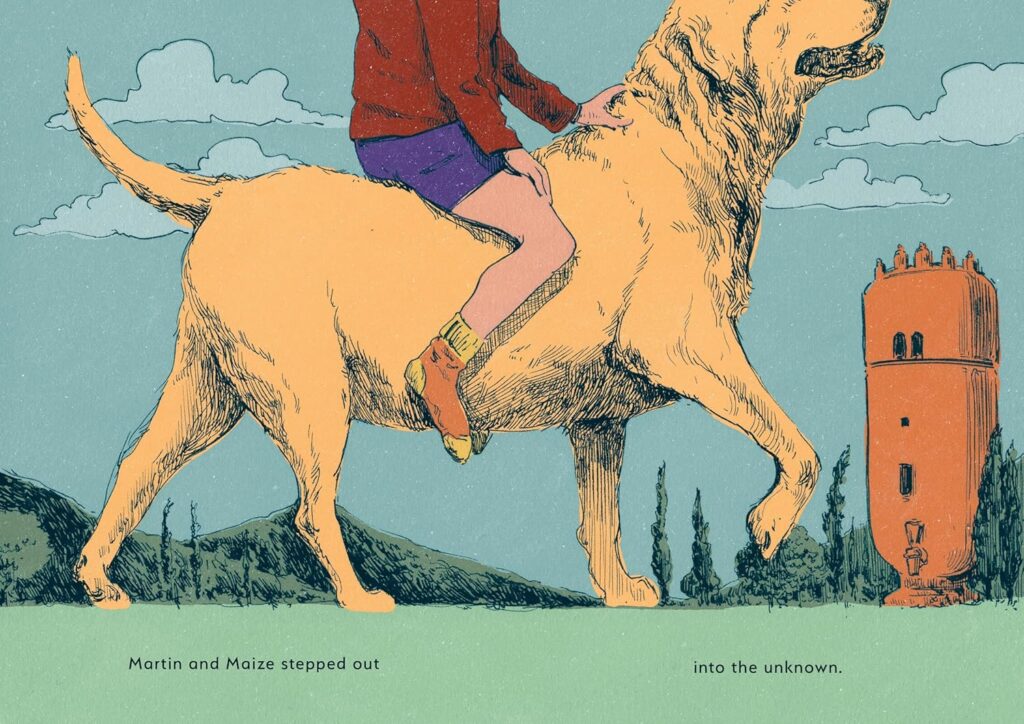
In the case of Sunday, the void is represented by the faces of Martin and his grandmother. One page shows the two of them close together, then a two-page spread of just his eyes, then a two-page spread of her older (wiser) eyes that resemble outer space just a little bit, before the book ends with the realization that Martin and Maize could travel anywhere, even beyond our world.
Once you read the book you’ll go back and look at Sunday’s cover in a whole new light. Martin is looking through a telescope on his right eye and making that one seem massive, especially in comparison to his left eye that is shut. He’s sitting against a background that could easily double as outer space and the voyage of imagination starts all over again.
Sunday is an illustrated book that will get lots of attention during story time. The balance between overall text, in addition to its scope and style of art, adds up to something more than the sum of its parts. It’s an easy book to fall in love with and one that will end up in your forever bookshelf if you give it a chance.
Sunday is by author/illustrator Marcelo Tolentino and is available on Blue Dot Kids Press.
There are affiliate links in this post.
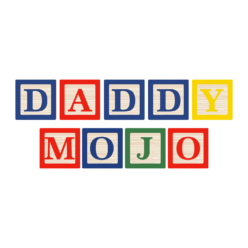
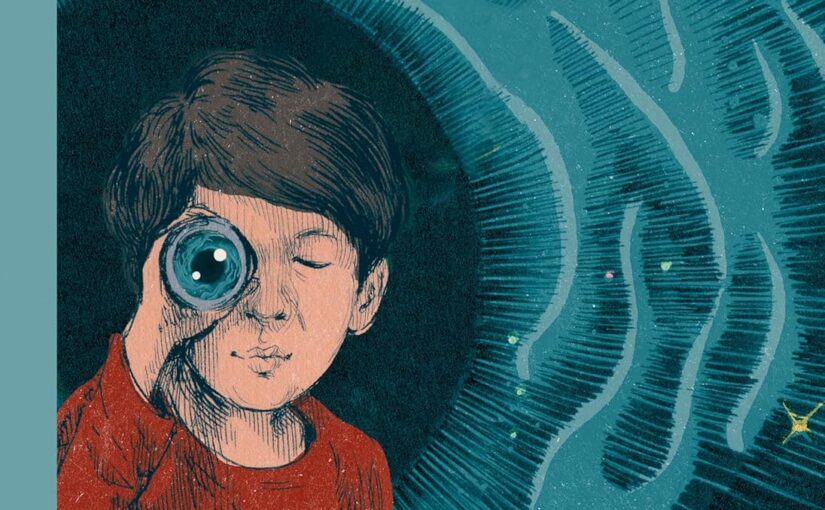
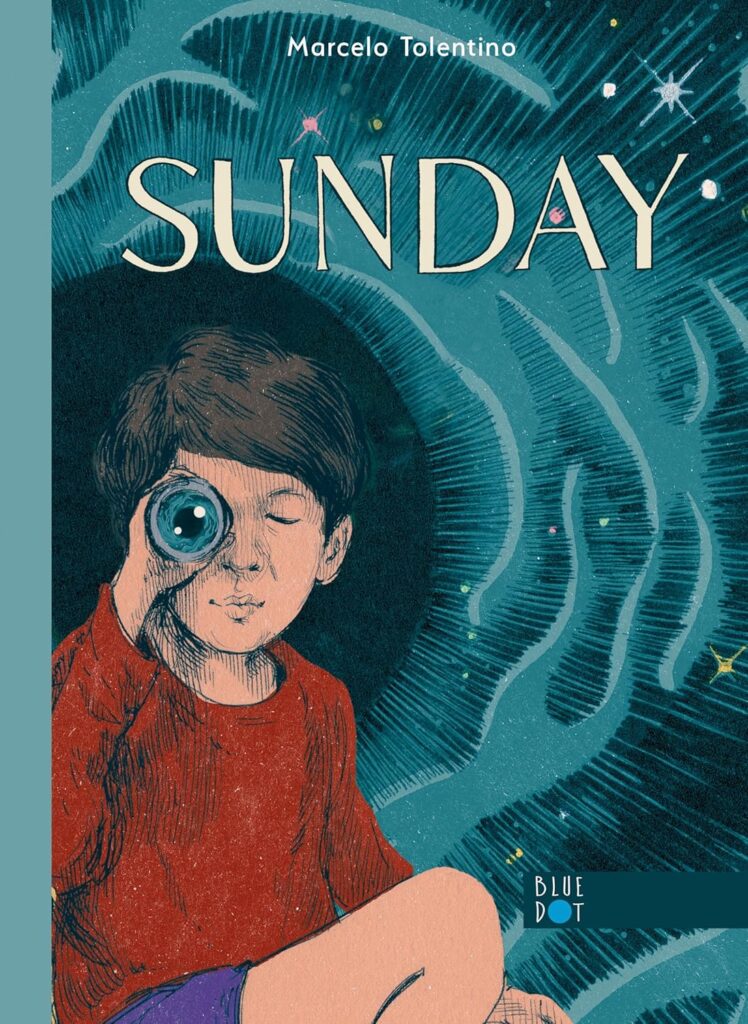
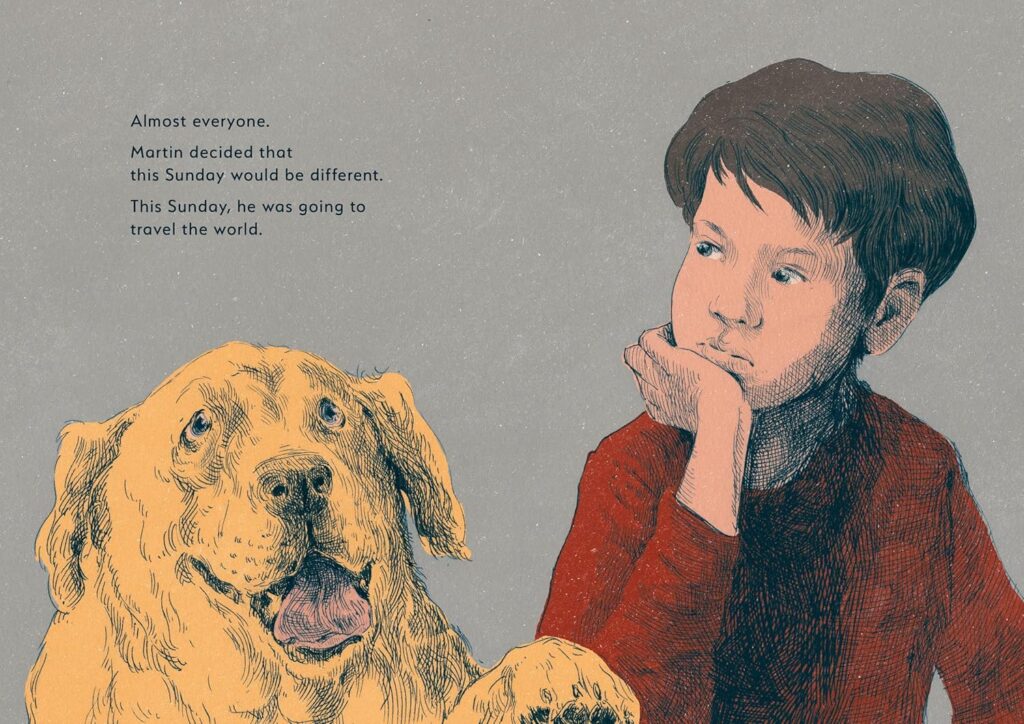
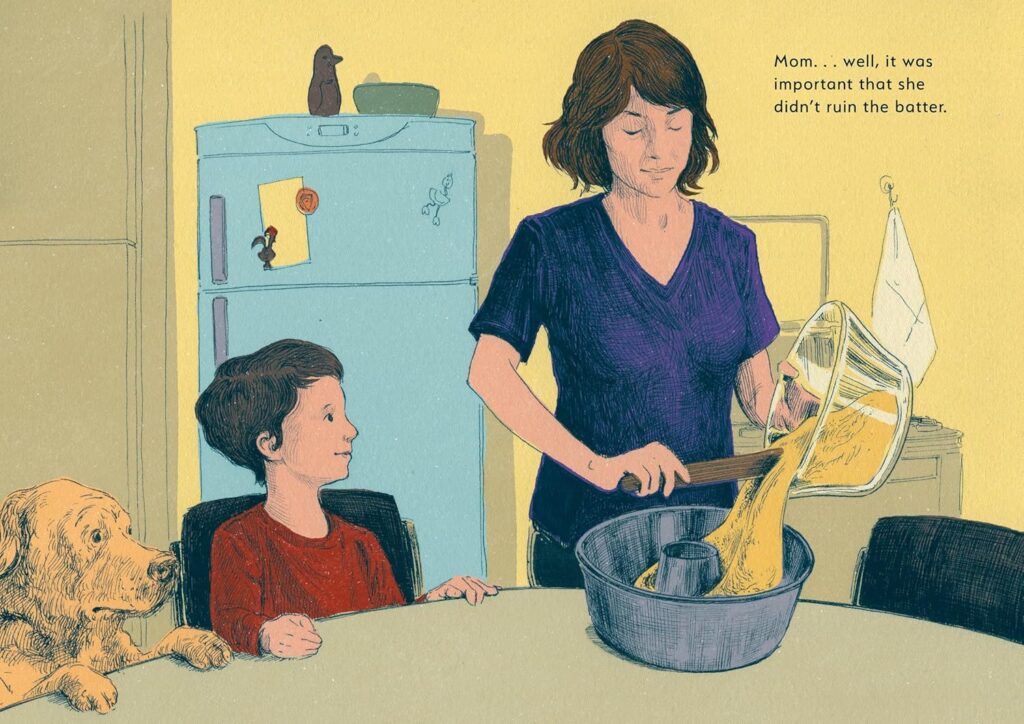



 Facebook
Facebook Twitter
Twitter Flickr
Flickr GooglePlus
GooglePlus Youtube
Youtube